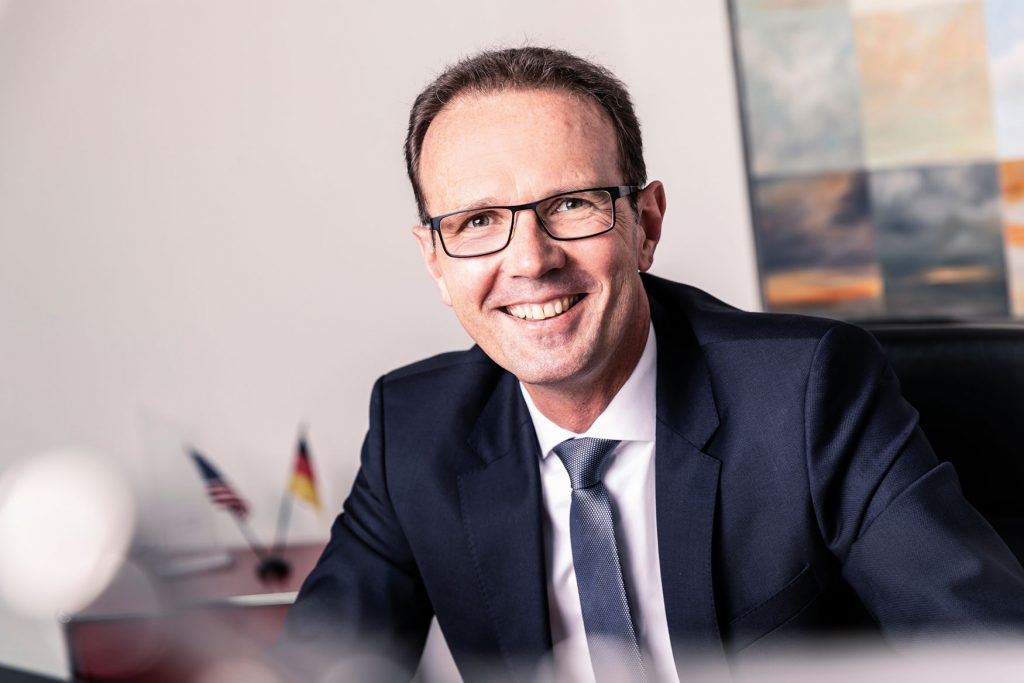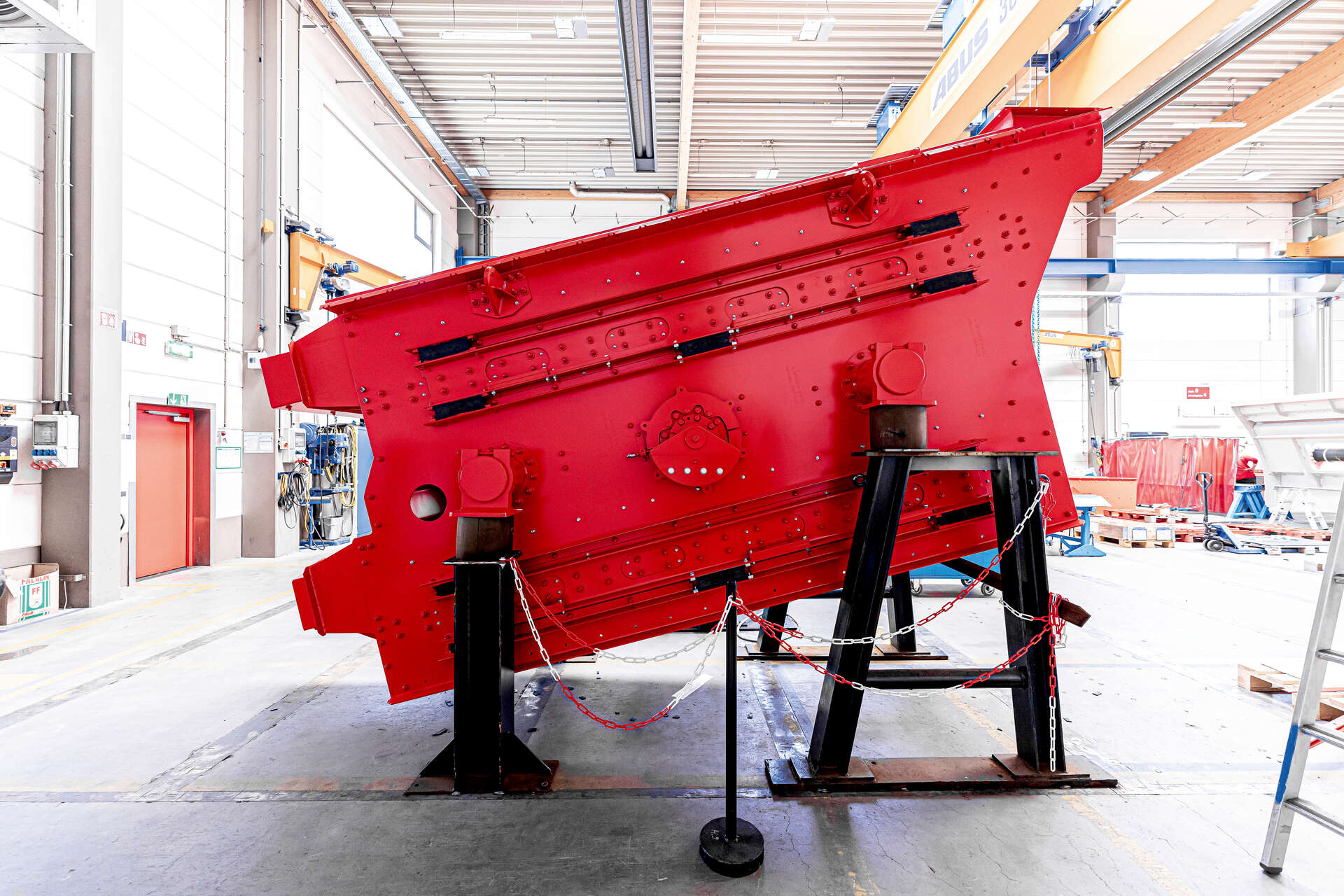SECONDARY RAW MATERIALS
Questions about glass recycling

Dr. Marcus Wirtz, managing partner of the JOEST group, answers:
Dr. Marcus Wirtz, managing partner at JOEST group, examined interesting system solutions and – not only technical – challenges in glass recycling in an interview with the editor-in-chief of the recovery journal, Dr. Petra Strunk.
Glass can be repeatedly recycled, and the energy input required in the production process can also be siginicantly reduced when end-of.life glass is used. But only provided the end-of-life glass is also correspondingly prepared. What is most important here? What is the attraction for Jöst in being so active in the filed of glass recycling?
Dr. Marcus Wirtz:
“Jöst has been working in glass recycling for more than thirty years. The company is not a plant builder, but supplies all the main components for glass sorting, with the exception of the actual sorting units. These components include various types of mechanical screens, conveying equipment such as vibrating-trough feeders, for example, and machinery for air separation technology, which has greatly gained in importance recently, thanks to intensified development work – on zig-zag classifiers, for example.
And what is now so special about glass recycling? This field has developed further and further, and with high speed, both in Germany and globally. Where, initially, it was mainly a question of relatively simple sorting by colour, with accuracy not really playing such an important role, the demands made on sorting are now becoming ever greater. The core technology, optical sorting, operates at high speed, and it sorts by colour with great accuracy, down into the 2 to 3 mm particle-size range. It also eliminates other non-glass contaminations. These capabilities have, simultaneously, resulted in the demands of glass-industry customers growing significantly. And, not least of all, customers‘ demands on glass quality have also risen in parallel.”
What are the special challenges of glass recycling?
Dr. Marcus Wirtz:
“Glass is by far the most wear-intensive material. That‘s a very important point, especially for vibrating-trough feeders. Correct design and appropriate protection against wear makes it possible to achieve much longer life times. This is not just a question of protecting specific material elements, but also of achieving the lowest possible level of abrasion by means of corresponding design provisions. Wear plays, of course, an even greater role in air separation, in other words, in zig-zag classifiers and cyclones, because there you have high air velocities combined with fine particles. This combination acts like a sandblaster, which will cause incredible wear. We have optimised our systems across decades – particularly the design of the piping, pipe routing, and the feed to the cyclones – and this has enabled us, with modified geometries and additional wear protection, to significantly minimise wear.”
Jöst equipment can be found around the world. What is Jöst's position internationally?
Dr. Marcus Wirtz:
“We do not operate as plant engineers, but we do supply many of the main components for glass recycling. Our systems are also very well known internationally. Jöst machines have a very strong presence in China, the USA and Australia, in particular. End customers are familiar with our technology and value its quality. In addition, we have a worldwide local presence, with local manufacturing, wearhouses for spare parts and services on all continents which provide after-sales service for our systems. In some cases, we also produce locally.”
What have been the most exciting projects already completed by Jöst? What special demands did Jöst encounter on these projects?
Dr. Marcus Wirtz:
“For the largest glass recycler in the USA we have equipped very many of these plants with Jöst machines during the past 15 to 20 years, for example. In addition, our projects have become ever larger during the last few years. In the recent past, we have increasingly been involved in projects that could claim to be the world‘s largest glass-recycling project. At the moment, this alternates between the large markets of the USA and China. Here, the mass flows themselves are, of course, a challenge, the equipment is getting larger and larger, but the same efficiency is demanded.”
Do you notice geographical differences in glass recycling around the world, and how does Jöst react to them?
Dr. Marcus Wirtz:
“It is, naturally, something quite different, if I collect waste types separately in Germany. Even there, of course, there is cross contamination, but the quantity is not even comparable to a single-stream waste flow, where the different types of waste converge with no sorting at all. Separate collection always generates the best sorting results. Where other collection policies apply, like in India and Southeast Asia, for instance, the feed material is much more inhomogeneous, and does not permit corresponding waste-type purity.”
Does this have implications for the system concept?
Dr. Marcus Wirtz:
“Even at Jöst alone, this has resulted in optimising our zig-zag classifier and other air separators for glass recycling. These components were previously not used at all in this sector, because there were no, or much less, organic contaminations in the end-of-life glass, or also because the glass was not recycled to such high quality standards. Customers‘ requirements on the recycled glass are now so high that they will only accept higher-quality end-of-life glass. And in the case of single-stream waste, in particular, one vital task is to remove the organic constituents right at the start of preparation. This is why we have optimised our classifier systems, and the zigzag classifier, in particular, specifically for glass recycling. Likewise our screening technology, which separates the fines fraction out of the flow of waste. One particular challenge is found in moist fractions for which, above all, our vibrating screens, such as the OSCILLA Flip-Flow-Screen, for example, above all, are used.
We observe that glass recycling is increasing in volume globally. Less and less can, and should, be landfill dumped, and the recycling rates demanded are rising; primary resources are also becoming scarcer and more expensive, which is why there is ever greater demand for high-grade secondary resources that have been prepared to a high quality level. And sorting technology itself is, of course, also continuously improving.”
From plant engineer to recycler – what, in your opinion, are the most important tips in the planning and operation of a glass-recycling facility?
Dr. Marcus Wirtz:
“This is an important question for us ourselves, this relates, very specifically, to screening technology. How can I optimise the feed and pre-sorting of the material? Older plants that are now upgrading focus, above all, on the organics constituent, a fraction which must be removed from the flow of glass at the very start of preparation. Air separation is then added to mechanical screens to solve this problem. These are precisely the topics that we are working on, and they show a positive trend for us.
A look into the future – how do you see the upcoming development of glass recycling and the technology needed for it?
Dr. Marcus Wirtz:
“I have a very positive view of the future, I perceive potentials for expansion, globally – and also in Eastern Europe, there is a need there to catch up. Even now, during this Corona crisis, capacity utilisation in the recycling machinery sector at Jöst is very good.”
Around the world, there is a rising trend for the use of glass instead of plastics. It will also be necessary, for this reason, to recycle correspondingly more glass. We are focussing on the optimisation of systems, even better separation, higher system availability, longer equipment service-lives. In glass recycling, we are talking of a mass product for which a separation efficiency just one half of one percent higher makes a difference in the calculation, with system availability also improved and maintenance costs dropping again by a couple of points. This means much better profitability and cost-effectiveness for the system. So we also see this global trend, since the yield of end-of-life glass will become ever larger and the countries of the world will increasingly ask themselves how they should handle their waste flows and what can they make from them.”
Many thanks for this very interesting discussion!
If you are interested in innovativ solutions in the field of glassrecycling, feel free to contact us!
Articel at https://www.recovery-worldwide.com/en/
Weitere Beiträge
As part of the JOEST group, MOGENSEN has been a trusted provider of high-performance screening and sorting technologies for many years. The new website now showcases this expertise more clearly and with a modern touch.
On International Women’s Day, we celebrated the great women in our company who have made a significant contribution every day with their commitment, expertise and passion. Their efforts have been a driving force behind our success and an inspiration to us all.
JOEST South Africa was commissioned to manufacture and supply replacement vibrating feeders for a critical power generation facility. The new units are designed to replace equipment that had been in operation for over 20 years, ensuring the continued reliability and efficiency of the plant.
MOGENSEN joins China’s food security project as an official supplier, supporting the nation’s plans to strengthen domestic grain production capabilities. The appointment by COFCO, China’s largest state-owned agricultural company, includes the deployment of multiple precision screening systems for processing rice, wheat and soybeans, among other grains. This long-term initiative is in line with China’s new food security law, which went into effect on June 1, 2024.






